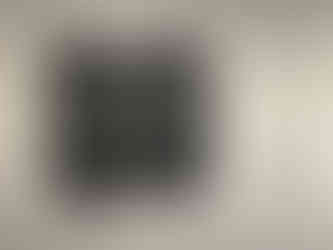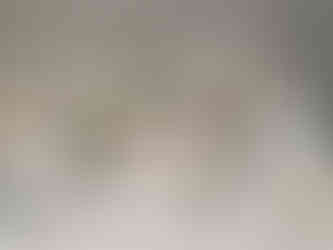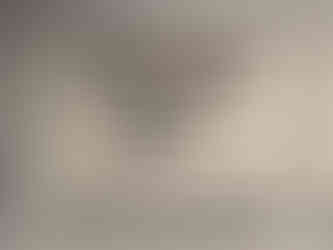Create Your First Project
Start adding your projects to your portfolio. Click on "Manage Projects" to get started


museum of women in the arts
location
washington, d.c.
date
december 16, 2023
this was my first time visiting the NMWA and it completely surpassed all expectations. most are all too aware that the art world has been dominated by male artists for centuries, and that still to this day, women are marginally underrepresented in art institutions. framing the museum as purely women artists, i was hesitant to see how the galleries were arranged, as i didn't want the focus to completely be on the fact that all the artists displayed are female. but by the time i walked out of the museum, i completely forgot that that was the framework of the museum. it's incredible how full the world of art is without the contribution of male artists. i highly recommend a visit next time anyone is in washington.














Smith has documented the impact of gentrification in her Harlem community since the 1990s. In "Between Harlem and Me," she overlays her photographs of present-day Harlem with historical images of the area that she sources from the archives of the Schomburg Center for Research in Black Culture at the New York Public Library. Through her montage, Smith connects past and present while exploring the future of Harlem's ever-changing and vibrant landscape, culture, and people.


Through her portraits, Sherald explores the ways people construct and perform identities in response to political, social, and cultural expectations. The title of this work references racial labeling through the term "redbone," slang historically used in the southern United States to denote a Black or mixed-race individual with a light skin tone. Sherald typically paints skin in grayscale, metaphorically removing its "color." Set against a brightly tinted background, Sherald's young subject wears pigtails and a cheerful yellow pinafore dress, but her direct, neutral expression reveals little emotion.






During the 1930s, Abbott created an expansive series of photographs of New York City, striving to capture the transition from old buildings to new infrastructure. The pit in the foreground of this image was excavated to contain the foundation of Rockefeller Center's skyscraper; Radio City Music Hall appears in the background. Abbott's images remind us that even the largest of humankind's creations form relatively modest marks on the surface of the Earth.


Mendieta brought an intensely personal approach to the fields of Land Art and earthworks, which effloresced in the 1970s. Her extended "Silueta" series of performances, sculptures, and films portray the outline of a female figure made from dirt, sand, twigs, pigment, flowers, flames, and other materials. Volcán records a silueta she carved into dirt, filled with gunpowder and sugar, and then ignited.
Mendieta viewed her siluetas as "a search to find my place, my context in nature."


Tschape created her series "The Sea and the Mountain" along coastlines and in rainforests in Brazil, where she grew up and lives part of the year. Unlike artists who interpret what they discover in nature, Tschape grafts her own creations onto scenery, blurring the boundary between reality and fiction. Latex spheres inhabiting the foreground conjure enormous primordial eggs. Nurtured by water and air, they may metamorphose into the mythical creatures that populate much of the artist's imagery.




Aiming to break down divisions between painting and sculpture, art and craft, Hammond uses an array of materials to create works such as The Meeting of Passion and Intellect, in which she wraps wooden armatures with fabric and then covers them with latex and paint.
In combining textiles, traditionally associated with women, with the historically masculine realms of painting and sculpture, Hammond questions such binaries, suggested in the two halves of the work as well as its title.




This work is part of Sherman's "Rear Screen Projections" series, which marked her foray into color photography.
Images of herself in contemporary attire from the 1970s and early '80s are closely cropped and superimposed onto blurred projected backgrounds, a nod to the special effects used by Alfred Hitchcock in films such as Rear Window
(1954). The deliberate artifice of the scenes indicates that images, characters, and so-called feminine identities are social constructions.


Abbott rose to fame as a cutting-edge portrait photographer in Paris in the 1920s and went on to create revolutionary representations of New York City. As part of the Works Progress Administration's Federal Art Project, Abbott captured the dynamic energy of the city in images of bustling neighborhoods such as the Bowery district, where she photographed Blossom Restaurant. When a male official remarked to Abbott that "nice girls" did not go to the Bowery, she famously replied, "Buddy, I'm not a nice girl. I'm a photographer ... I go anywhere."


Prior to creating consciously feminist art, Chicago contributed to the "look" art movement in Southern California, which paralleled the popular practice of customizing cars and surfboards. Her early techniques such as the clean shapes, meticulously applied finishes, and luminous, gradated hues visible in this painting laid the aesthetic foundations for her later work. The series marks Chicago's initial development of imagery that signifies the essence of the female body but allows for multiple interpretations.






Morris's angular, abstract paintings investigate architecture and the psychology of urban environments. After visiting Washington, D.C., during the final days of the Clinton administration, Morris created a video work (Capital, 2000) and several paintings that depict iconic structures or power centers, including the Kennedy Center, Dulles International Airport, and the State Department. These complex and layered city portraits trace urban, social, and bureaucratic topologies.


Robertson's boundary-pushing approach employs the processes and techniques of photography in the absence of the medium's key tool-a camera. Instead, the abstract forms and captivating colors result from the artist's experiments dousing the surfaces of her prints with photographic developer, fixer, water, and light at various concentrations and temperatures. "There are so many tiny chemical reactions, chance things that are coming together that can never be replicated," Robertson says. 9, printed on a more than 100-foot-long roll of light-sensitive metallic paper, can be displayed in a variety of configurations depending on the site in which it is installed.




Beginning in 1973, supporters of Chilean General Augusto Pinochet executed and/or tortured an estimated 30,000 people during his seventeen-year reign. Many victims are believed to have been buried in the Atacama Desert, and mothers of the disappeared still search there for the remains of their loved ones. Traditional cultural manifestations, even the Pinochet regime's declared national dance, cueca, were adopted by grieving women as forms of resistance. San Martín's book serves as a visual companion to the women's handkerchief-waving folkloric dances and chants. Mujeres Buscadoras, Fragmentary Memory, Chile includes a small shovel, handkerchiefs, and sand from the desert.





